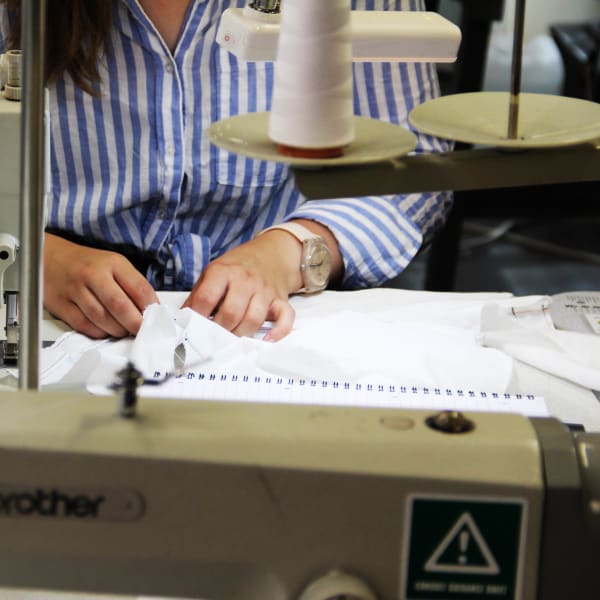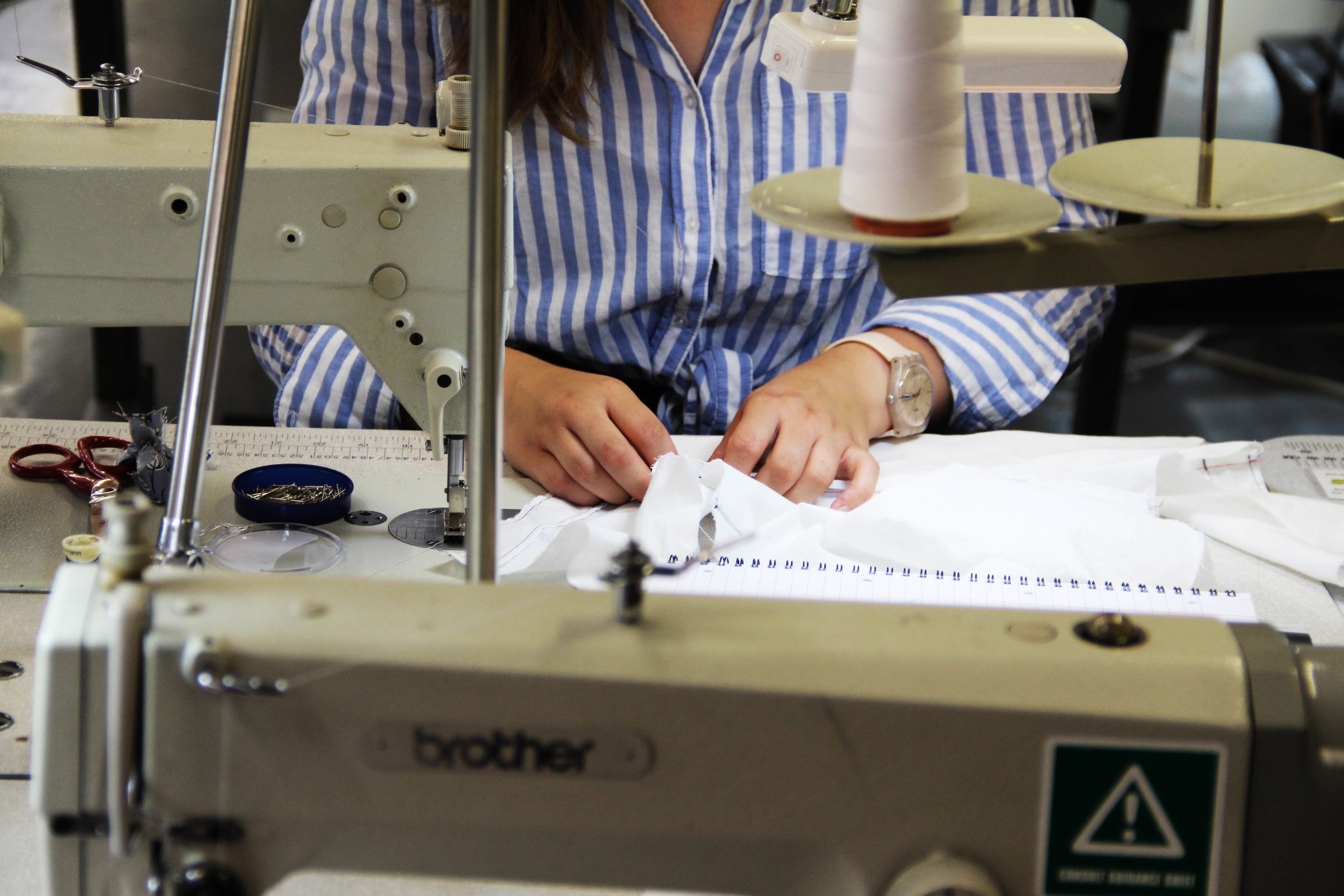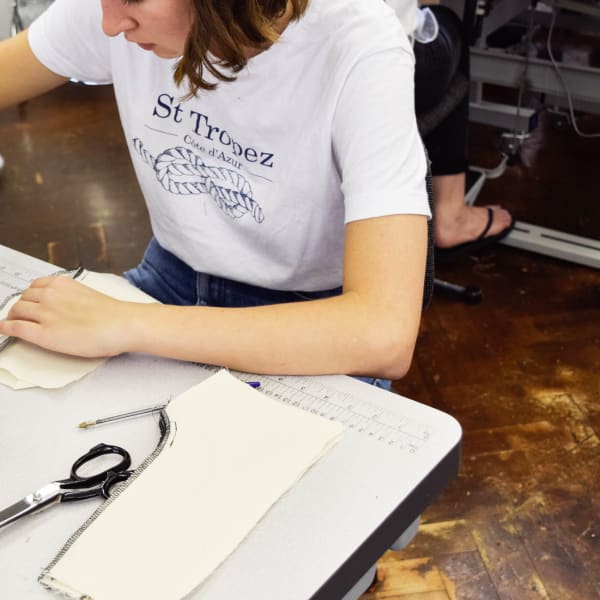
How to become a professional tailor or dressmaker

- Written byCarys Thomas
- Published date 11 May 2022

Although many clothes are now produced in factories, 200 years ago every garment was made by hand. The art of tailoring in fact dates back to the early medieval period, when all clothing was made by hand. Tailors often worked to a unique sewing pattern and their designs had a signature style which established their reputation.
A high-quality custom-made piece of clothing can transform an outfit and create a smart, polished look. London’s Savile Row is often regarded to be the centre of tailoring expertise, and a bespoke two-piece suit from one of the best-known tailors in the area can set you back around £5,000 (or more!). Bespoke suits from these tailors are made using an individual paper pattern that is made for the customer and refined over several fittings to achieve the perfect fit.
Are you interested in a career as a tailor or dressmaker? We spoke to specialist technician and tailoring expert Siaw Lee Priddle, to find out how sewing enthusiasts can improve their skills and build a career in this area. Siaw currently teaches on our Professional Sewing Skills Short Course at London College of Fashion. In this guide we'll explore how the two roles compare and share some useful advice on how to get started.
Take a look at our guide on how to start a career in fashion for some more top tips from our experienced tutors and talented students.
What do tailors and dressmakers do?
Tailors create bespoke items of clothing for clients, and often specialise in suits, jackets, coats and trousers. Clients will be measured and clothing made to fit their proportions perfectly. Their role also involves repairing and adjusting clothing to meet a client’s specific needs. They may be required to resize garments by hemming trousers to make them shorter or taking in seams to make clothing smaller, for example. Tailors may work for textile manufacturers, department stores and dry cleaners, or they may be self-employed and have their own business. They often work closely with clients and customers to help them choose the best fabrics and colours for a particular piece.
A dressmaker’s practice is generally focused on the creation of new clothing items for women, including dresses, suits, blouses, formalwear, wedding dresses and sportswear. Like tailors, dressmakers may also offer alteration services for clients and customers.
Tailors and dressmakers should have an eye for detail, excellent sewing, pattern and cutting skills, an interest in textiles and the ability to communicate effectively with customers and clients.
So you’ve decided you want to be a tailor or dressmaker? Read on for our 5 steps to success:
1# Look for work experience
One of the best ways to start your career as a tailor or dressmaker is by looking for work experience. Tailoring is a craft and one of the best ways to learn is from a professional tailor with industry knowledge and expertise. Look for apprenticeships and ask local tailors and businesses about work possibilities. Speak to as many people in the industry as you can and be persistent – you might not find the perfect placement for you straight away but it’s important to stick at it. Employers will value your passion and commitment. Securing work experience will give you the opportunity to use the tools and equipment professional tailors use to build your confidence and skills. This kind of experience will also be ideal to add to your CV and use as a platform for future growth and development. Read about what Caroline Andrew, tailor at London’s Savile Row, has to say about the value of work experience in the industry.
2# Take a course
To be a tailor or dressmaker it’s important to have excellent sewing skills. Taking a course or studying for a qualification in tailoring will be beneficial for your career prospects and technical skills. Our Professional Sewing Skills Short Course is designed to develop your basic sewing skills to a professional standard and explores the techniques used in top-quality ready-to-wear pieces. You may want to look at a course in textiles or pattern cutting or study for a degree in bespoke tailoring. An apprenticeship in tailoring or garment making may also be a good option as you’ll have the opportunity to learn on the job. The Savile Row Bespoke Association (SRBA) offers a prestigious apprenticeship scheme which can take between 2 and 6 years to complete, depending on what you choose to specialise in.
3# Practice sewing techniques
If you want to become a professional tailor, you’ll need to put the hours in. They say practice makes perfect, and this is certainly true in the world of tailoring. If you plan to be self-employed one day, practising on your own time will also be a good way to learn self-discipline as you’ll need to manage your own workload. Practice sewing techniques as much as possible, and refer to online tutorials, books and craft channels that demonstrate small projects to develop your skills and confidence. Even simply listening to a podcast on sewing or tailoring can help you learn the terminology and understand what’s involved in a career in the industry. Experiment with different fabrics and techniques to improve your technical skills and establish which area or type of garment you are most interested in. Practice working on professional-level sewing machines to familiarise yourself with the different settings and needle types that you’re likely to be working with in future roles. It's worth investing in your own sewing machine to practice on if you can. Ask around and think about looking for a re-conditioned model to save costs.
4# Build a portfolio
Sharing a portfolio of your best work is a great way to attract future clients and get noticed by potential employers. If you can, include photographs and samples of your work to showcase your abilities. You’ll want to show a selection of garments and styles to reflect your range of skills. Be sure to include sketches and mock-ups that illustrate your design process. It can also be helpful to include a brief written commentary that summarises the project brief and shows how you produced the garment. Record the making process in as much detail as you can. You may want to refer to your notes during job interviews or client consultations, so it’s essential to record the design process from start to finish. Try to mention any adaptions you made to the design and how you overcame any issues along the way. Make sure your portfolio is clearly formatted and well-presented. Remember, a strong portfolio takes time to produce, so don’t be tempted to rush the process.
5# Network
Networking is an essential part of a career in the creative industries. Join a professional organisation or follow tailoring groups online for an insight into life in the industry. Take any opportunity you may have to meet with professionals in the industry and work on building meaningful connections. Connections can lead to potential new jobs, projects and professional opportunities. Research shows that as much as 80% of jobs are filled through personal and professional connections, so networking can be a great way to land your first tailoring job if you’re just starting out. Try sharing a portfolio of your work online or building a website to highlight your skills, projects and goals and make connections with other like-minded creatives. LinkedIn is also a helpful networking tool that can be a great way to share professional achievements, build connections and search for job openings.
Are you looking to build a career as a tailor or dressmaker? Discover how a pattern cutting short course can help you build your foundation in fashion design.
If you want to expand your knowledge and skills in the area, taking a short course could be a good option for you. Our range of fashion making and pattern cutting short courses can help you enhance your sewing skills and learn how to design and make your own garments. Take a look at our upcoming short courses for more details.

